Grail
Rumors around the Otto Rahn death
Initially it was stated that the cause of Rahn's death was either "exposure" or "pneumonia", notwithstanding the fact that he was young and vigorous and an experienced mountain climber who had once spent an entire snowbound winter in the Alps.
A subsequent account of Rahn's demise related that he drank a bottle of rum, fell asleep in the snow and froze to death while climbing a mountain known as the "Wilde Kaiser". (Die Welt Newspaper, May 1:t, 1979)
Later rumors claimed that Rahn had committed suicide by swallowing a cyanide capsule while on the mountain.
Another report by Gerard de Sede ("The Treasure of the Cathari", 1966) postulates that Rahn did not die on a mountain top in 1939, but was arrested and imprisoned in solitary confinement at the Dachau concentration camp. He was beheaded in 1945 just before the compound was liberated by American forces.
There is a real, existing mountain in the south of France which is rumored to house the Holy Grail...
There is a real, existing mountain in the south of France which is rumored to house the Holy Grail. In fact, local legend says that the Grail has always been there, ever since a dove from Heaven descended upon the mountain, split it open with its beak, and dropped the Grail inside. This is the mountain of Montsegur, which was the last Cathari stronghold defeated by the Albigensian Crusade. (This was the only crusade waged by Christiandom against people who were Christians themselves.) The term “Cathar” was a catch-all term used by the Catholic Church for the numerous Gnostic Christian cults that proliferated across the Languedoc region of France during the Middle Ages. As they grew in numbers, they gradually became a threat to orthodox Christianity.
Revealed: Himmler's secret quest to locate the 'Aryan Holy Grail'
Heinrich Himmler, the head of the Nazi SS, made a secret wartime mission to an abbey in Spain in search of what he believed was the Aryan Holy Grail, a new book claims. Himmler visited the famous Montserrat Abbey near Barcelona where he thought he would find the Grail which Jesus Christ was said to have used to consecrate the Last Supper.
According to The Desecrated Abbey, by Montserrat Rico Góngora, the Reichsführer-SS thought if he could lay claim to the Holy Grail it would help Germany win the war and give him supernatural powers. The book claims that, far from being the King of the Jews, Himmler shared the outlandish belief with other leading Nazis that Jesus Christ was actually descended from Aryan stock.
Is a deserted village the best clue to the whereabouts of the Grail Castle?
The Grail and the story of King Arthur is a myth, in the sense that things got added to it. The first Grail account did not mention the nature of the Grail, whereas Wolfram von Eschenbach particularly identified it with a black stone, speculated by some to be a meteor, by others to be a cousin of the Ka’aba stone.
The story of the Grail is like the myth of Jesus: From an interesting person, believed to have resurrected, he grew into the son of god, to the child of a virgin birth, its father the Holy Spirit. One aspect of the Grail mythology is the addition of the “Grail castle” to the original mythology.
The Holy Grail: Imagination and Belief
At the climax of the French prose romance, The Quest of the Holy Grail, Sir Galahad looks into the dish that was the object of the long and perilous search by himself and his companions, Sir Perceval and Sir Bors. This is his report:
For now I see openly what tongue cannot describe nor heart conceive. Here I see the beginning of great daring and the prime cause of prowess; here I see the marvel of all other marvels.
Fascination with the Grail
The reality behind the myth...
Sagas describe the Holy Grail as a chalice with fairy-tale powers; it’s been the inspiration for countless tales, legends and also works of art. And it is both a stranger to the Christian body of thought -- and yet somehow connected with Christianity in mysterious ways. What is it about the "Holy Grail"? Why is it still the subject for mainstream movies like Indiana Jones and the Last Crusade and The Fisher King? Is there something more substantial behind the Grail than simple legend? If we can delve deeper into the true meaning of the Grail, the core of many poems, legends, novels, and fairy tales may become apparent.
The more seriously someone undertakes to approach the subject "Grail" -- because he feels touched personally by it -- the more certainly will he come up against questions such as whether or not the knowledge about the Grail can be traced back to some revelation… A revelation handed down out of a mythical distant time, but weighed down, proliferated and falsified on its way through time, through the world and the life of countless generations. Let us begin at the beginning...
Holy Grail
Since the publication of The Da Vinci Code the debate rages as to what and where the true Holy Grail exists
Taken as a whole, the various renditions of the Holy Grail legend, whether they derive from Europe or Asia, imply that there are many forms that the Holy Grail can take.
These legends assert that the Holy Grail can be anything from the platter mentioned by Chrétien de Troyes, the first author of the Holy Grail legend, to the Cup of Christ alluded to by Robert de Boron, or even the Stone of Heaven mentioned by Wolfram von Eschenbach in Parzival.
Еhe church's war on the cathars
During the eleventh and twelfth centuries, the region known as the Languedoc, spreading approximately southward from the Loire to the Pyrenees down into Arragon and eastward to the Rhone, became the most highly civilized area of Western Europe. Its fertile soil and pleasant climate provided the means for a leisurely life. The Rhone and the Garonne were notable routes of communication and the passage of many Crusaders on their way to the East gave an immense stimulus to trade. Above all the Moslem conquest of Spain had brought the influence of Arabic culture. The larger cities had schools of medicine, mathematics and astrology where Arabian scholarship was imparted. Jews were not debarred from public life and were highly respected as doctors and teachers. The Catholic Church no longer held the monopoly of knowledge; and were gradually losing their power hold in the Languedoc.
Invisible Eagle and NS Occult History, by Alan Baker
While in Berlin, [Karl Maria] Weisthor worked with the author and historian Otto Rahn (1904-1939), who had a profound interest in medieval Grail legends and the Cathar heresy. In 1933, Rahn published a romantic historical work entitled Kreuzzug gegen den Gral (Crusade Against the Grail), which was a study of the Albigensian Crusade, a war between the Roman Catholic church and the Cathars (or Albigensians), an ascetic religious sect that flourished in southern France in the twelfth and thirteenth centuries. The Cathars believed that the teachings of Christ had been corrupted by the Church -and, indeed, that Christ was exclusively a being of spirit who had never been incarnated in human form.
Thule, the Priory of Sion, and Otto Rahn
Conspiracy buffs have long been interested in the Nazis for their occult connections, and in recent years the south of France has garnered interest for a quite different supposed occult conspiracy, yet the two are rarely connected.
In an interview with Peter Levenda, Dagobert’s Revenge Magazine hit on the figure of Otto Rahn, grail researcher, who, after having completed a book on the grail mysteries of south France for the Nazis mysteriously died in the Pyrenees. It was also pointed out that around the time that Otto Rahn, who was a skilled mountain climber, was in all probability killed by the Nazis, a figure by the name of Karl Maria-Wilgut, known as Weisthor, who was a mystic employed by the SS, was relieved of his duties and gradually retired from public life.
In the article, the story was left as one of the many mysterious deaths surrounding whatever lies around Rennes-la-Chateau, but the truth of the matter can indeed be reconstructed, and gives some good insight into the forces at work in these two realms.

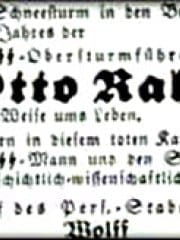

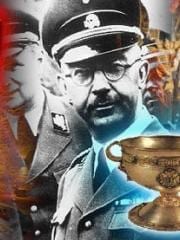
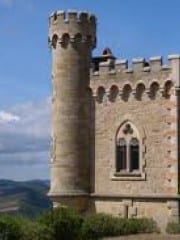



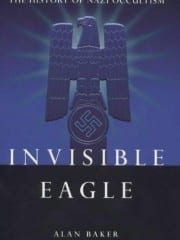
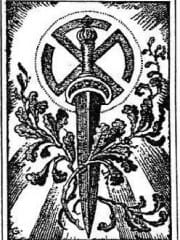
Commenti recenti
13 anni 17 settimane fa
13 anni 17 settimane fa
13 anni 17 settimane fa
13 anni 17 settimane fa
13 anni 20 settimane fa
13 anni 26 settimane fa